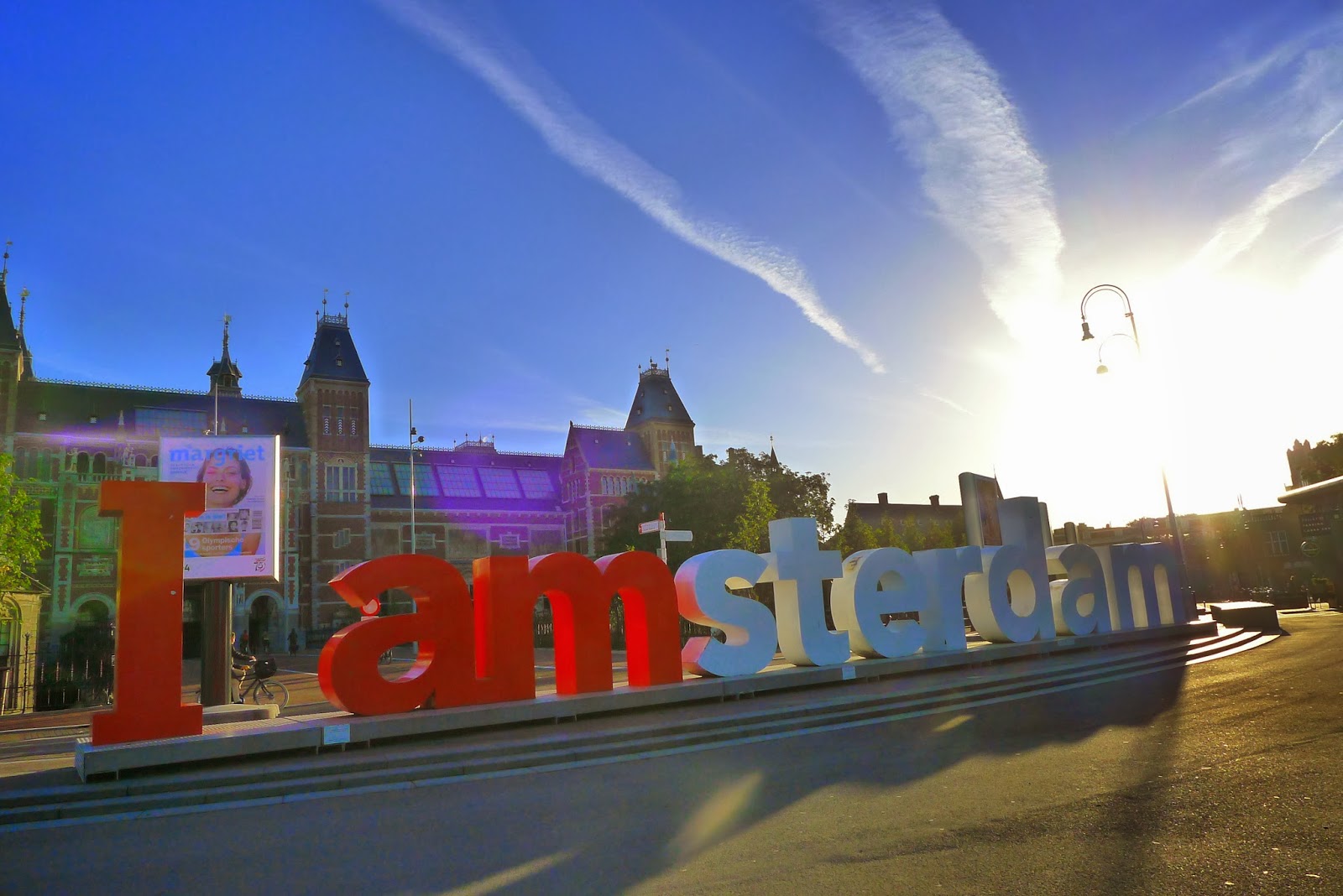It had the tempo of a city stirring awake after a weekend. Children happily marching to school, cyclists dominating the streets, buses stopping and going.
The other must-go museum in Amsterdam after Van Gogh is the Rijksmuseum which is Holland's national museum of sorts. The important works of early Dutch Masters such as Rembrandt and Vermeer reside in this century-and-a-quarter old museum. It has been closed for renovations for nine years and reopened in the Spring of 2013.
Fronting the entrance to Rijksmuseum is a greenbelt, and with how much rain falls here, it's so vibrantly and plushly carpeted in green.
The Dutch love many things and one of them are their bikes.
Because I had not much time, I had to do the whirlwind tour of this museum's extensive collection and I did not take too many pictures. If you do go, piece it out so you can see and appreciate everything. I had specifically wanted to see the masterpieces of Rembrandt and Johannes Vermeer, so I breezed through much of the exhibit.

 |
| The Battle of Waterloo is the largest painting at Rijksmuseum and you can see how it spans floor-to-ceiling. This is a symbolism of Napoleon's empire collapsed with his final defeat at Waterloo. |
 |
| Rembrandt's "Night Watch" is a massive painting that can only be appreciated when seen in person. |
Then it was time to go, but not without a quick coffee break.
 |
| Caffeine fix at the opera house cafe before our drive to Paris |
I love museums because they allow us to briefly relive a
place and time long gone. It is a peep
show into a forgotten culture, a playback into a now estranged anthropological
makeup of a society we no longer identify with.
Yes, collectively we have made progress in terms of civil rights and gender and racial equality. Yet in many ways, a look-back also fosters
a chastening experience that begs the question: in this vortex of technological
modernity, who is to say that our lives are really better off?
















No comments:
Post a Comment